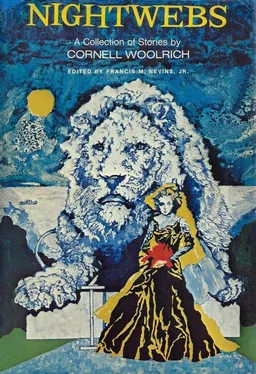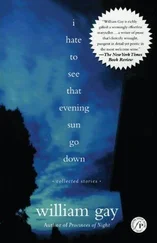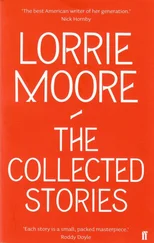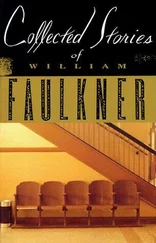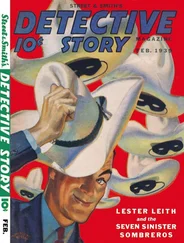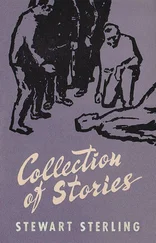Dime Detective, 7/1/35) comes close to the police procedural story in its simplicity of plot and to cinematic immediacy in its vividly realized setting inside the Statue of Liberty — the same setting that Alfred Hitchcock, so close to Woolrich in world-view and technique, would use seven years later in Saboteur. “Dark Melody of Madness” (
Dime Mystery , 7/35), better known under its later title “Papa Benjamin,” deals with the fate of a jazz composer and bandleader who learns too much about a New Orleans voodoo cult, and marks the first appearance of a presence that will soon dominate the stage of Woolrich’s imagination: the evil power whose prey is man. “The Corpse and the Kid” (
Dime Detective , 9/35), Woolrich’s best-known 1935 story (under its later title “Boy with Body”) and for me his best tale of that year, concerns a young man who finds that his father has killed his tramp stepmother, and desperately tries to conceal the crime by carrying the body out of the New Jersey seaside town where the family lived and over to the roadhouse rendezvous where the woman’s current lover is waiting for her. The account of the boy’s journey with the body wrapped in a rug is the first of those magnificent set-pieces of pure nail-biting suspense that only Woolrich can do so stunningly well, and the psychological overtones of the story (in effect the son is carrying the mother in his womb and is struggling to place her dead in her lover’s bed) suggest something of the horrors in the author’s relations with his parents. “Dead on Her Feet” (
Dime Detective , 12/35) is a classic of bitter ironic suspense that will be discussed at greater length in my afterword to the story later in this book. In “The Death of Me” (
Detective Fiction Weekly , 12/7/35) Woolrich adapts for the first time a motif from James M. Cain on which he would ring dozens of changes over the years: the guy who gets away with the crime he committed but gets nailed for the one he didn’t. “The Showboat Murders” (
Detective Fiction Weekly , 12/14/35) is the first of Woolrich’s fast-action whizbangs, with the thinnest of plots but a whirlwind pace and an attention to precise details of physical movement, even in the midst of a running gun battle, that reflects Woolrich’s youthful desire to be a dancer. And his final story of the year, “Hot Water” (
Argosy , 12/28/35), is no great shakes as a story but, dealing as it does with a Hollywood star and her bodyguard, gives further evidence of the influence of films on the author.
By the end of 1935, Woolrich was a professional, and between 1936 and 1939 he published at least 105 stories (of every length from the short-short to the novella, but the majority of them long short stories) as well as two book-length magazine serials. By the end of 1939 his name had become a commonplace on all the top-quality mystery pulps — Argosy, Black Mask, Detective Fiction Weekly, Dime Detective — and had also appeared on the covers of low-grade cheapies like Black Book Detective and Thrilling Mystery, not to mention his tales in such a high-quality general fiction magazine as Whit Burnett’s Story. These hundred-odd stories are astonishing in their unity — hardly a single one lacks Woolrich’s unique mood, tone and preoccupations — no less than in their variety. They include straight historical adventure (“Black Cargo,” “Holocaust”), attempts at Runyonesque humor (“Oft in the Silly Night,” the central section of “Change of Murder”), morally terrifying cop stories (“Detective William Brown”), blistering tales of pure whizbang action and violence (“Double Feature,” “Murder on the Night Boat,” “You Pays Your Nickel”), nightmares of ghoulish panic (“The Living Lie Down with the Dead”), mordant tales of biterbit irony (“Post Mortem,” the final section of “Change of Murder”), simple little stories where the smart dick proves that the apparent accident or suicide was murder (“U, As in Murder,” “The Woman’s Touch,” “Short Order Kill”), tales of crime and punishment with intimations of realities beyond the experienced world (“Mystery in Room 913”), heart-pounding clock races packed with unbearable tension (“Johnny on the Spot,” “Three O’Clock,” “Men Must Die” which is better known as “Guillotine”), and chaotic tragedies of suspense and horror presided over by powers whose plaything is man (“I Wouldn’t Be in Your Shoes”).
By the turn of the decade, Woolrich had made uniquely his own certain settings — the seedy hotel, the cheap dance hall, the precinct station back room, the inside of a rundown movie theater — and certain motifs: the clock race, the corrosion of love and trust, the little guy trapped by powers beyond his control. These malign powers that shatter people’s lives take a variety of forms. They may be personal, as in the stories about the self-appointed avenging angel who in punishing crimes beyond the law often destroys the innocent either along with or instead of the guilty (“Somebody on the Phone,” “After-Dinner Story”). They may be socioeconomic, as in the stories of little people driven over the edge by the Depression (“The Night I Died,” “Goodbye, New York”). Or they may be metaphysical, as in that most terrifying situation that arises in what I call the quintessential Woolrich story: only two resolutions are conceivable but neither is consistent with the known facts and each causes the destruction of innocent lives (“I Wouldn’t Be in Your Shoes”). Whatever form the malign powers take, they destroy.
Reading the reminiscences of Woolrich’s fellow writers (I am thinking especially of the late Frank Gruber’s invaluable 1967 memoir The Pulp Jungle ), one can obtain an indirect picture of the man’s life and of the powers that were eating away at him. We get the impression of a terrifyingly introverted man, living alone with his mother in a hotel, never going out except when it was absolutely necessary, his entire external life dominated by the overpowering figure of Claire Attalie Woolrich and his inner life, his work, reflecting in tortured and horrific patterns the repressions and frustrations in which he was suffocating.
In 1940 Woolrich published his first mystery novel, The Bride Wore Black , which quickly became and today remains a classic in the literature of suspense. Its central theme is the avenging angel: Julie Killeen’s husband was killed on the church steps and the novel follows her as she slowly tracks down and kills, one by one, the drunk driver and his four cronies whom she holds responsible for her husband’s death. Eventually a homicide cop named Lew Wanger picks up the trail and begins to stalk the huntress through the years. Their paths finally converge at a lonely country estate and both stalkers suddenly find themselves in the presence of Woolrich’s malign powers. Bride was followed by five other novels over the next eight years, each including the word “black” in its title: The Black Curtain (1941), Black Alibi (1942), The Black Angel (1943), The Black Path of Fear (1944), and finally Rendezvous in Black (1948), which deals with the same themes as Woolrich’s first suspense novel, thus bringing the series around full circle to its beginning.
Woolrich’s short stories and novellas were somewhat reduced in number during the early Forties — fourteen were published in 1940, eleven in 1941, six in 1942, ten in 1943 — but these included such classics as “All at Once, No Alice,” “Finger of Doom,” “One Last Night,” “Three Kills for One,” and “Marihuana.” At least some of the energy that during the Thirties had gone into stories for the pulps was now diverted into a new form: the radio play. Many of Woolrich’s stories were “naturals” for adaptation and broadcasting on such series as Suspense, and at times Woolrich wrote the radio versions himself. Judging from the transcriptions I have heard, in his own adaptations he succeeded in maintaining something of the unique Woolrich mood, despite the inherent limitations of the radio-drama form.
Читать дальше
